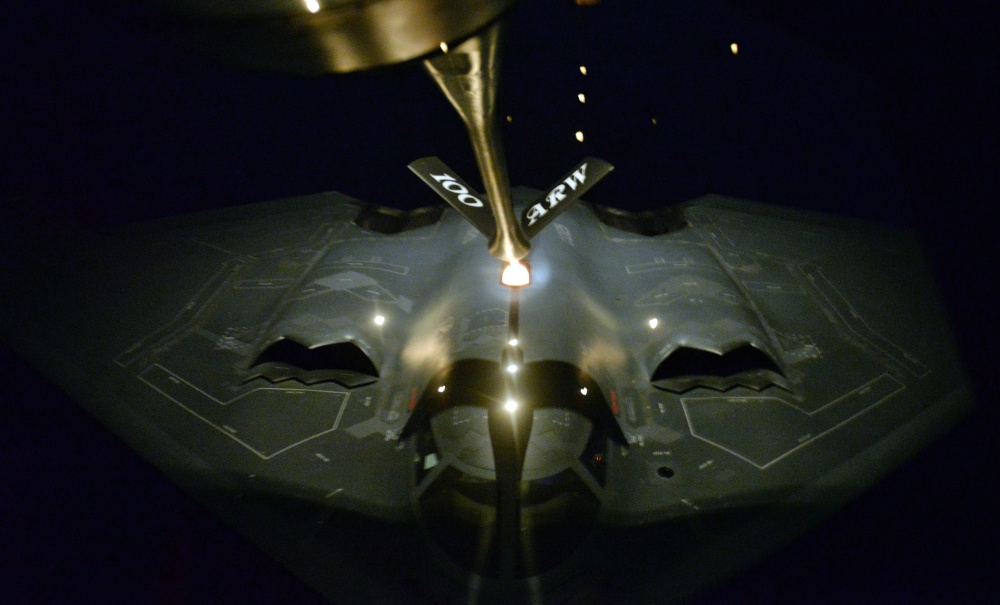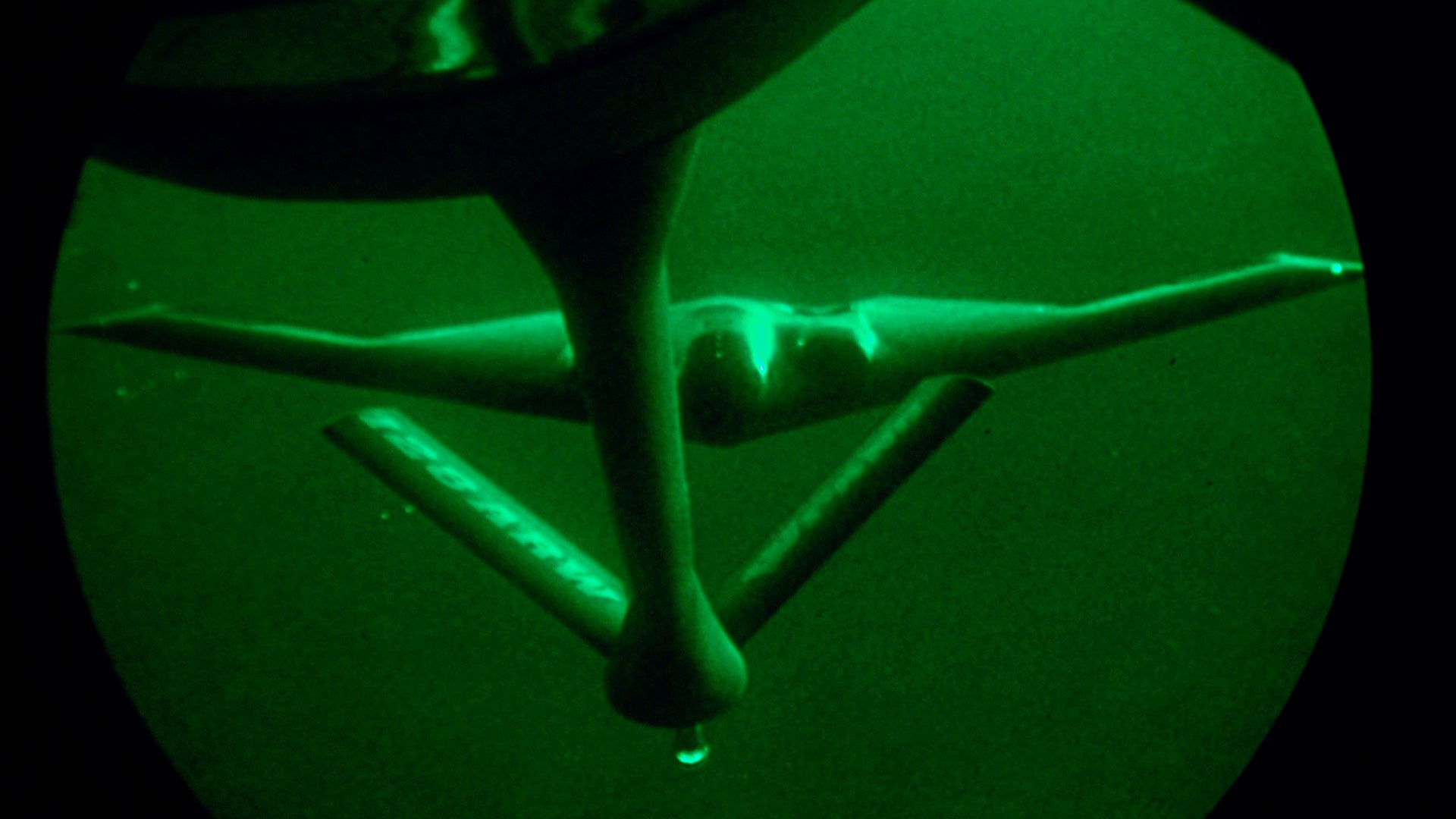Six years ago, US-backed coalition airpower tore down Libyan strongman Muammar Gaddafi’s air defenses. Since then the dictator has been killed. So have a US Ambassador and three other Americans, and thousands of Libyans. Libya, in general, descended into chaos following the death of Gaddafi and the winding-down of coalition air operations over the country. Today, militant factions of varying levels of extremism are aligning themselves to suit their political, tribal and religious ties. Terror groups like ISIS found the chaos of the Libyan civil war a rich incubator for their ideology and operational goals, while at the same time small glimmers of hope have emerged under the Libyan unity government—but for now let’s just say the country has a long way to go before being considered a stable state.
In the last half decade following the fall of Gaddafi, the US has quietly leveraged a minimalist brand of air power in an attempt to hunt and kill high-value targets inside the country. Primarily this included using F-15Es on sporadic long-range missions from the UK, and a constant presence of Predator and Reaper drones in Libyan skies. Last Summer this policy changed, and a Marine Amphibious Group’s Cobra attack helicopters and Harrier attack jets began pounding ISIS-aligned militants that had flooded Gaddafi’s hometown—the central coastal city of Sirte. These missions wrapped up early last Winter, when ISIS elements were finally pushed from the city.
Now, both figuratively and literally out of the black, America’s most capable and deadly aerial weapon, the B-2A Spirit stealth bomber, has laid waste to a pair of training camps south of that city. Which begs an interesting question: Over a country that remains in disarray with air defenses supposedly neutered years ago, why would stealthy B-2s be needed for such a mission?
A nighttime raid
Yesterday at around 2AM local time, three B-2A Spirits (two primary, one spare) took off from Whiteman AFB and headed east. Under callsigns CLIP11, CLIP12, CLIP13 the stealth bombers crossed the Atlantic, sometime after which two of the jets “cleaned up,” pulling in all their antennas to make the aircraft as stealthy as possible. The two black jets then began their run into Libyan airspace, towards a pair of terrorist training encampments located about 30 miles southwest of Sirte, in an area of relatively open desert. It was here that a large group of ISIS affiliated militants had assembled after Sirte fell—and where the US Secretary of Defense said the fighters were planning attacks on Europe and US interests abroad.
Long before the B-2s arrived over their targets, special operations personnel and a flock of armed MQ-9 Reaper drones were surveilling the camps at a distance, providing real-time updates as to the alert posture of those inside. Then—over half a day after they had left Missouri—the B-2s’ weapons bay doors opened and unleashed dozens of individually targeted joint direct attack munitions on pre-selected targets around the encampments.
A still from a short clip shown by the DoD during a Pentagon press briefing of ISIS fighters at one of the targeted camps unloading munitions from a pair of technicals:
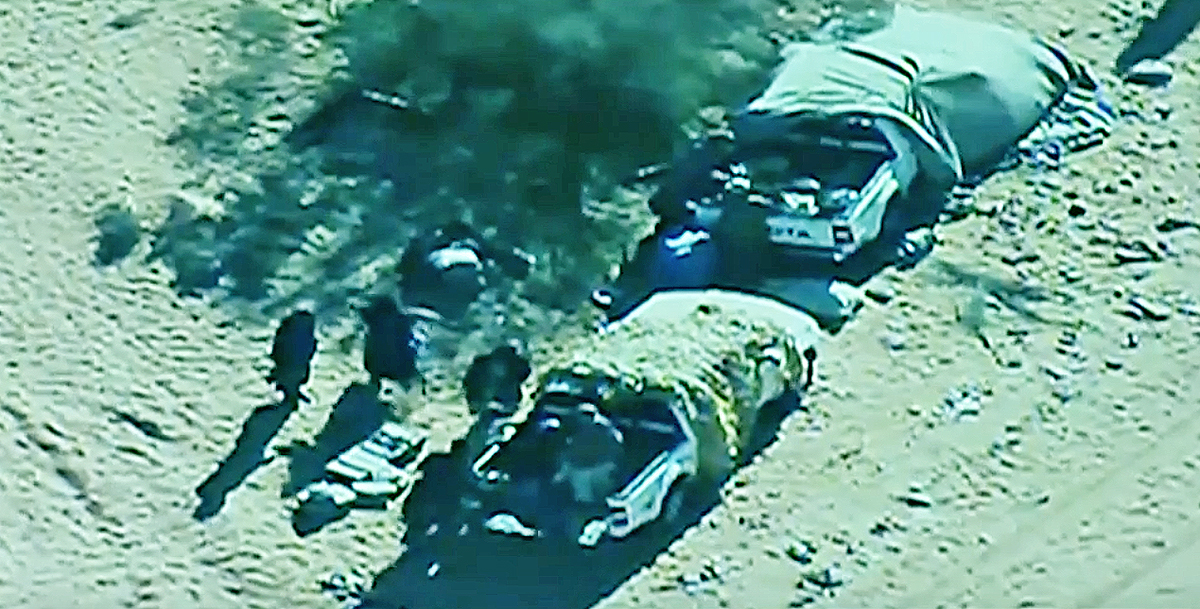
In a ferocious crescendo of fire and shockwaves, the B-2s’ cargo obliterated fixed targets at both sites. Anyone or anything who ran was likely to be quickly engaged by the loitering Reaper drones armed with AGM-114 Hellfire missiles and 500lb GBU-12 Paveway laser guided bombs. The lion and the vulture, the Lion takes down the big game, and the vultures come in to pick up the scraps and poke at the bones.
A short clip showing a small portion of the airstrikes near Sirte that was presented during a Pentagon media briefing:
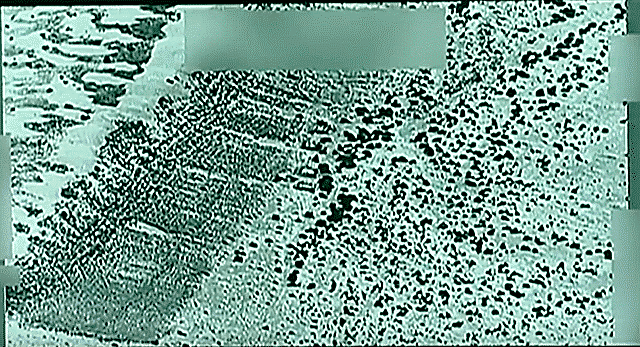
Reports state that the installation was obliterated and around 100 ISIS fighters fell under the crosshairs of an incredible 100 individual air-to-ground munitions during the strike. The B-2s made it back safely to their master base in America’s heartland after nearly 34 hours in the air, facilitated by a slew of aerial refueling. Remember: Nobody kicks ass without tanker gas—not even ultra long-ranged B-2s.
A strengthening Spirit
The shear amount of surgically applied death and destruction a single B-2 can unleash on one pass is really unprecedented in the history of air combat. Each B-2 airframe can carry up to 80 individually targeted, GPS-guided 500lb GBU-38 Joint Direct Attack Munitions (JDAMs).

Basically, take a satellite image of an airfield (or a town) and pick out the 80 things you want to make into a crater. Then load the coordinates of those things onto the jet and weapons and fly the mission. With the GBU-38’s accuracy rate just a few points off 100 percent, there is a very good chance a well trained B-2 crew and targeteers will make those targets selected in the photo disappear. Not just that, but mixed loads can also be carried, including bunker buster BLU-109s, 2,000lb and 1,000lb JDAMs alongside their 500lb counterparts—so larger targets and bunkers can be attacked alongside smaller ones on the same mission.
And the B-2 can dump its whole bomb load in a single run over a localized area—or it can make multiple drops along a route. This helps with survivability, as surprise is a key element of the aircraft’s effectiveness, and once its bay doors open the jet is no longer stealthy. When it comes to attack runs on targets, “one and done” has been optimal operating procedure for the B-2A over the last two decades.
In recent years the B-2 has been on the receiving end of much-needed upgrades as part of an ongoing effort that will run into the 2020s. These include plans to enhance the jet’s defensive systems and electronic surveillance measures, boosting its crew’s situational awareness and ability to adapt to changing threats drastically during combat. Cockpit interfaces and mission computers (which remained ‘80s high-tech till recently) are also being upgraded, allowing for retargeting of smart munitions on the fly. The jet’s huge twin electronically scanned array radars are also getting a major boost in capabilities. But one of the most exciting upgrades is to “The Beast’s” communications systems, which will include high-frequency satellite data connectivity, as well as the inclusion of other high-volume data-link modems that will allow the jet to receive real-time targeting information and battlefield data—and even video feeds from third parties like Reaper and most likely RQ-170 drones.
It seems very possible that a portion of this new communications and re-targeting capability was tested during this mission, where instead of having the B-2s quickly exit the theatre after their drop, they may have loitered with weapons still available to provide re-attacks on targets that need a little extra help dying. The MQ-9’s real-time streaming video can provide nearly immediate bomb damage assessment (BDA) imagery to intelligence folks, and could, using the B-2’s enhanced communication suite, convey instant coordinates to the jets’ crews to make follow up attacks on not fully destroyed targets. The B-2 can also help in verifying its coordinates via the use of their increasingly high-fidelity synthetic aperture radar.
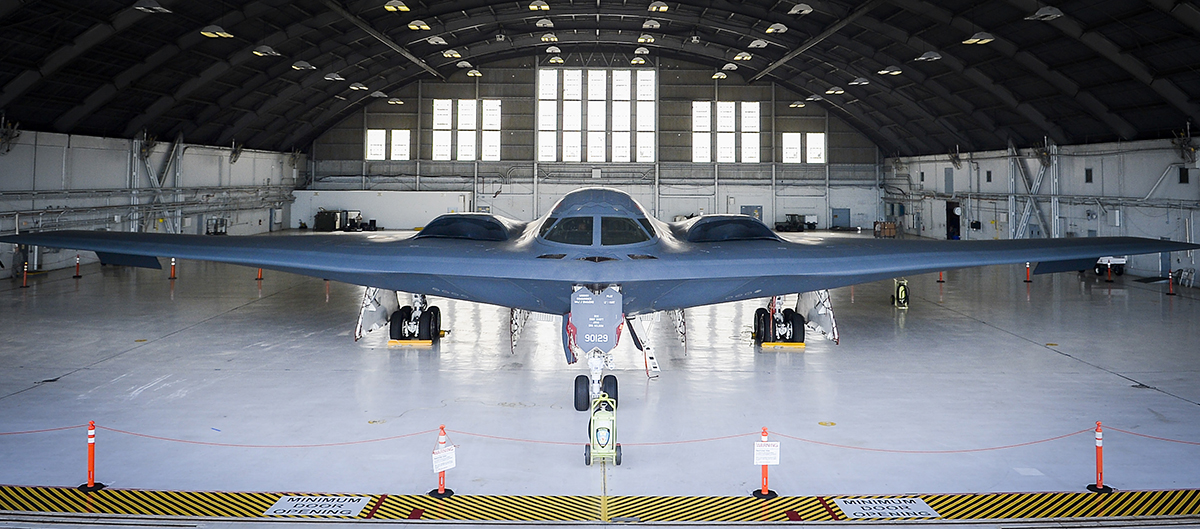
So did the Spirit try a few of its new bag of tricks on this mission? Considering the circumstances and their overt interoperability with the drones and special operations forces below their flight paths, it seems possible. A report from the Air Force Times also mentions an interesting quote from outgoing Secretary of Air Force Deborah James that seems to support this theory:
“The B-2s were dispatched from Whiteman Air Force Base in Missouri, flying 34 hours to conduct the attack, James said. The bat-shaped bombers were chosen, she added, because they are capable of carrying a large number and variety of weapons, and because they’re able to loiter afterwards — to “mop up” if necessary.”
As mentioned earlier, loitering around after the fact is not the B-2’s traditional calling card, especially considering that it is meant to penetrate deep into contested airspace, strike targets by surprise and get out alive. That mission really doesn’t call for hanging around over a recently appearing hellscape of its own creation. But in low to medium-threat environments, the ability to target on the fly and work alongside other platforms or ground units is clearly going to change tactics.
The reasoning for its use
So why not send the B-52H or B-1B to do the job? Those jets have the added benefit of toting around their own targeting pod that can lase targets, moving or stationary, for the laser guided bombs they drop, and they also carry the JDAM like the B-2.
First off, no other force in the Pentagon’s portfolio is more trained and ready for complex global strike missions than the B-2 Spirit community. It’s very much a silver bullet force of just 20 aircraft—of which just a handful are available for conventional attack operations at any given time. They train arduously for missions that can last as long as two days; missions where human factors can become almost as big a threat as the enemy. Additionally, the B-2 community is not committed all around the globe and worn down from over fifteen years of perpetual combat operations like the B-52H and B-1B communities are. They are almost entirely a single-garrison force, one that is unleashed for select missions only.
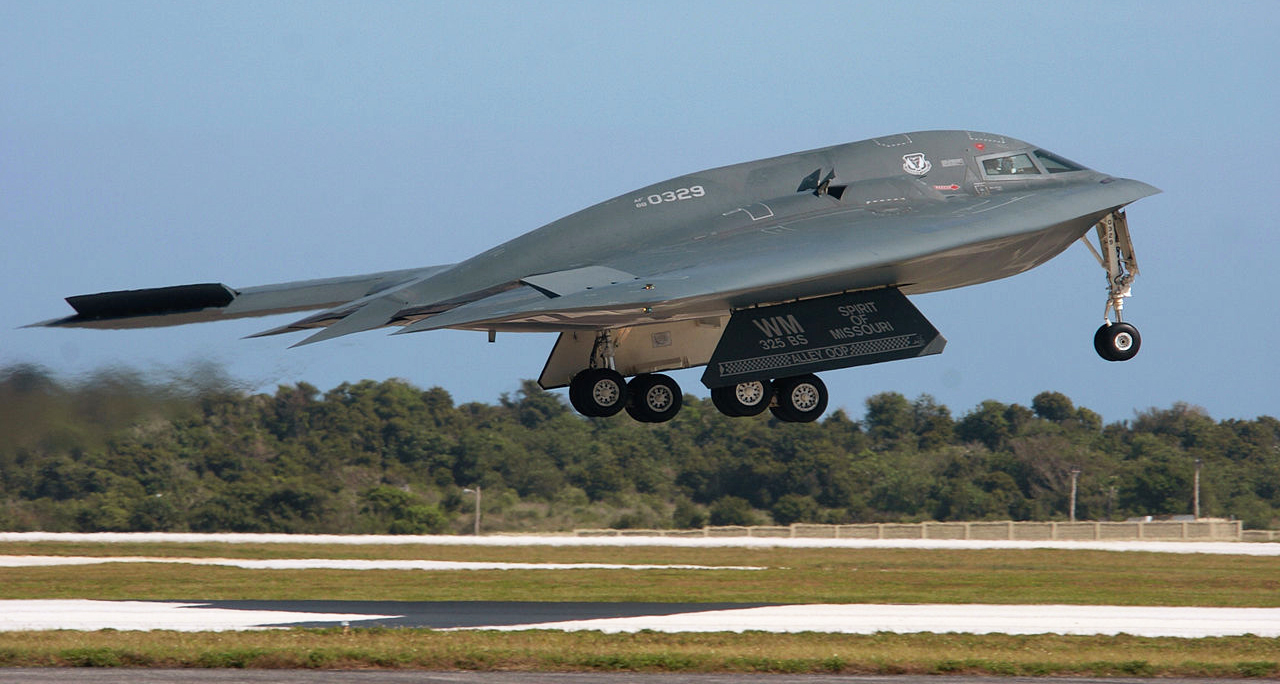
The B-2’s stealth capabilities, though not nearly as relevant over Libya today as they were during their attack runs as part of the opening strikes of Operation Odyssey Dawn in 2011, still offer something other platforms cannot—volume of fire and the best chance of surprise.
Radar sites are active in Libya today, mainly at the country’s larger airports concentrated along the coastline—just a couple dozen miles from the camps that were struck. There is a chance that the detection of an unidentified aircraft, even just as primary returns, could have been passed along to ISIS affiliated fighters, sending them scattering. For such an attack to be most effective, the targets need to be asleep in their beds. All it takes is one ISIS sympathiser working in relation with Libyan airport staff or the military, or even someone monitoring radio communications chatter about incoming aircraft, to realize something is up. The B-2 largely ensures the element of surprise remains intact.
There are also a mishmash of MiGs still prowling the skies over Libya. Although an encounter at night with a B-2 would be highly unlikely, why take the chance? And while Gaddafi’s massive MANPADS arsenal—which was notoriously looted during the uprising against him—may get the most press, heavier SAM systems have began appearing in Libya in recent months. Specifically these include the SA-3—the same type that took down a USAF F-117 during Operation Allied Force. Although there is a low chance that one of these missiles or their operators could take down a B-2, or would even be able to detect it in the first place, it’s still a possible threat—especially considering the questionable command and control organization within even US-friendly military factions in Libya. Overall it’s not like Libyan airspace is totally permissible and deconflicted.
It is also unclear how much the recognized Libyan government knew about the strike prior to its execution. Though lower-flying drones and smaller tactical aircraft buzz around the country daily, large bombers don’t. By using an aircraft that gives no warning of its arrival, the element of surprise could be ensured and there would be no need to pass potentially compromising information about the strike to Libyan officials in advance.

The B-2 also allows the Pentagon to deal out incredible amounts of destruction with an amazingly small footprint. For most missions the jet is better off going it alone than being part of a massive strike package. This means the normal armada of suppression of enemy air defenses, counter-air, and in some cases electronic warfare aircraft, along with an array of standoff support assets like tankers, combat search and rescue packages, airborne early warning aircraft, and other assets, are not needed or are needed in far smaller numbers. Were fighters were used instead of heavy bombers, the strike package might include dozens of strike aircraft alone, not counting all their support assets. In essence, using the B-2 means less assets and lives put at risk against an objective. It also means the whole battle plan can be simplified, executed faster, and with fewer avenues for disruption.
Maybe the most compelling reason to use the B-2 for this mission was to try out some of the jet’s new capabilities as described earlier, and to put to use the B-2’s evolving joint operations doctrine that has been trained for but not tested in combat. If anything else, this may have been our first “preview” look at “B-2 2.0” in combat, and by what we are being told it was brutally effective.
Finally, this was almost certainly the very last major military operation executed by outgoing President Barack Obama and his national security staff, including Secretary of Defense Ashton Carter, as well as the Secretary of Air Force and others in political leadership within the Pentagon’s five walls. There is risk in any operation, no matter how high-end the hardware used is and what the enemy’s capabilities are. Going with the very best possible asset that can provide the lowest overall risk, even outside of the normal rationale, and was likely a major factor in the B-2’s appearance over Libya yesterday evening. Having a “Black Hawk Down” type of incident on the last day of your Presidency would be a disaster of epic proportions. In fact, I give Obama credit for approving this mission at all, with that in mind. And hey, nobody can say that he didn’t go out with a bang, right?
Contact the author Tyler@thedrive.com
Update: 1/20/2016, 11:35AM PST- Here is a pic taken from a KC-135R during the mission:
